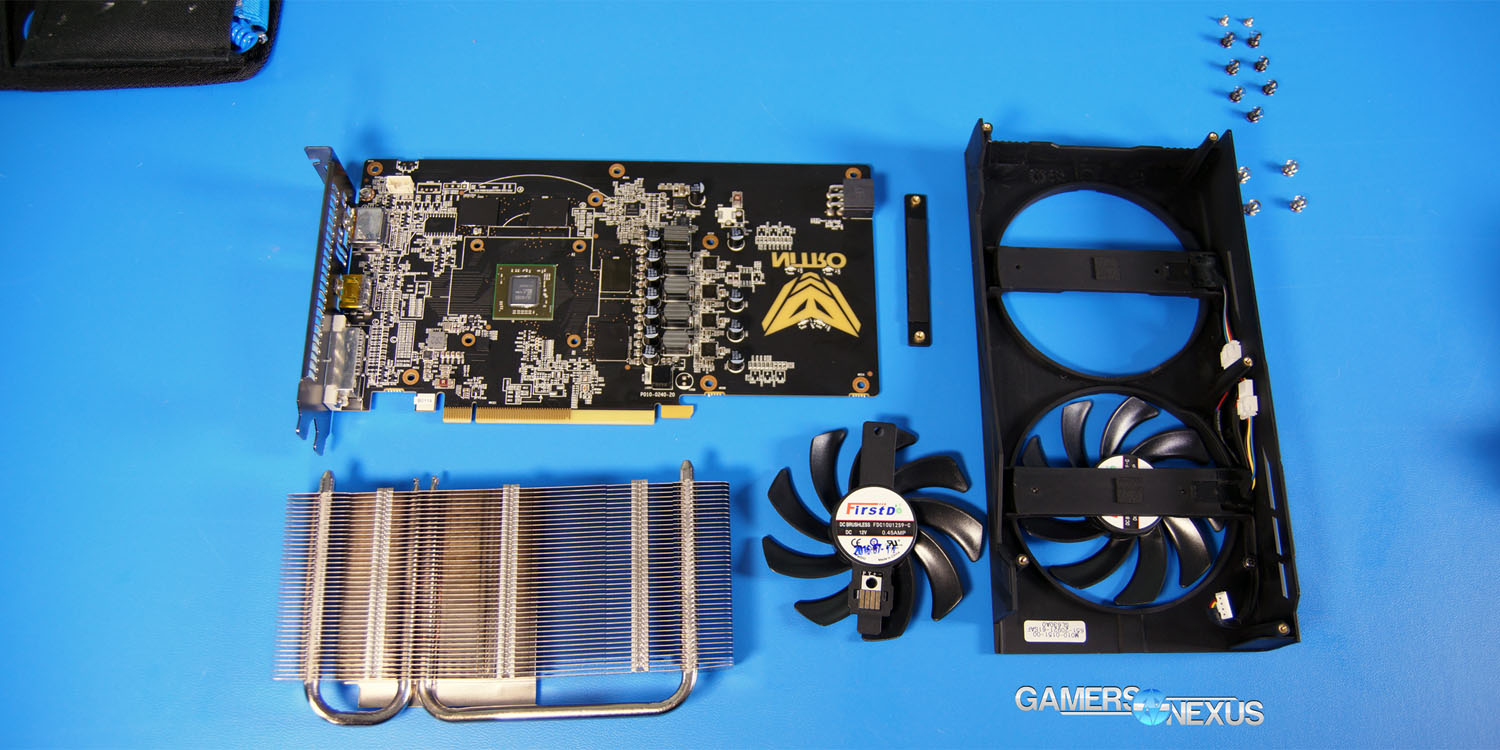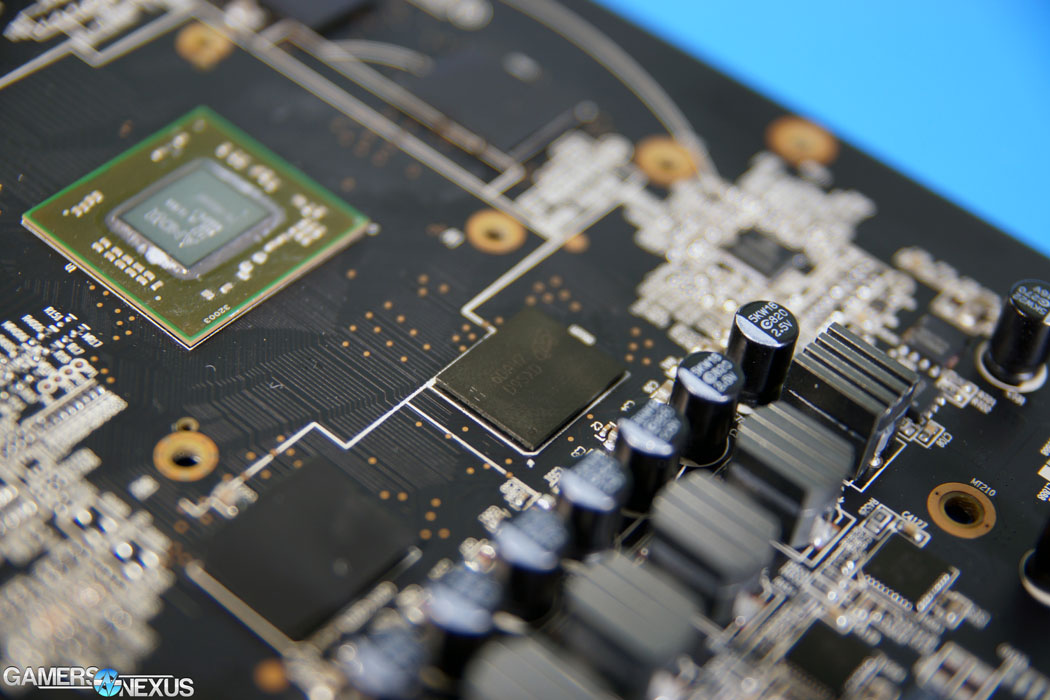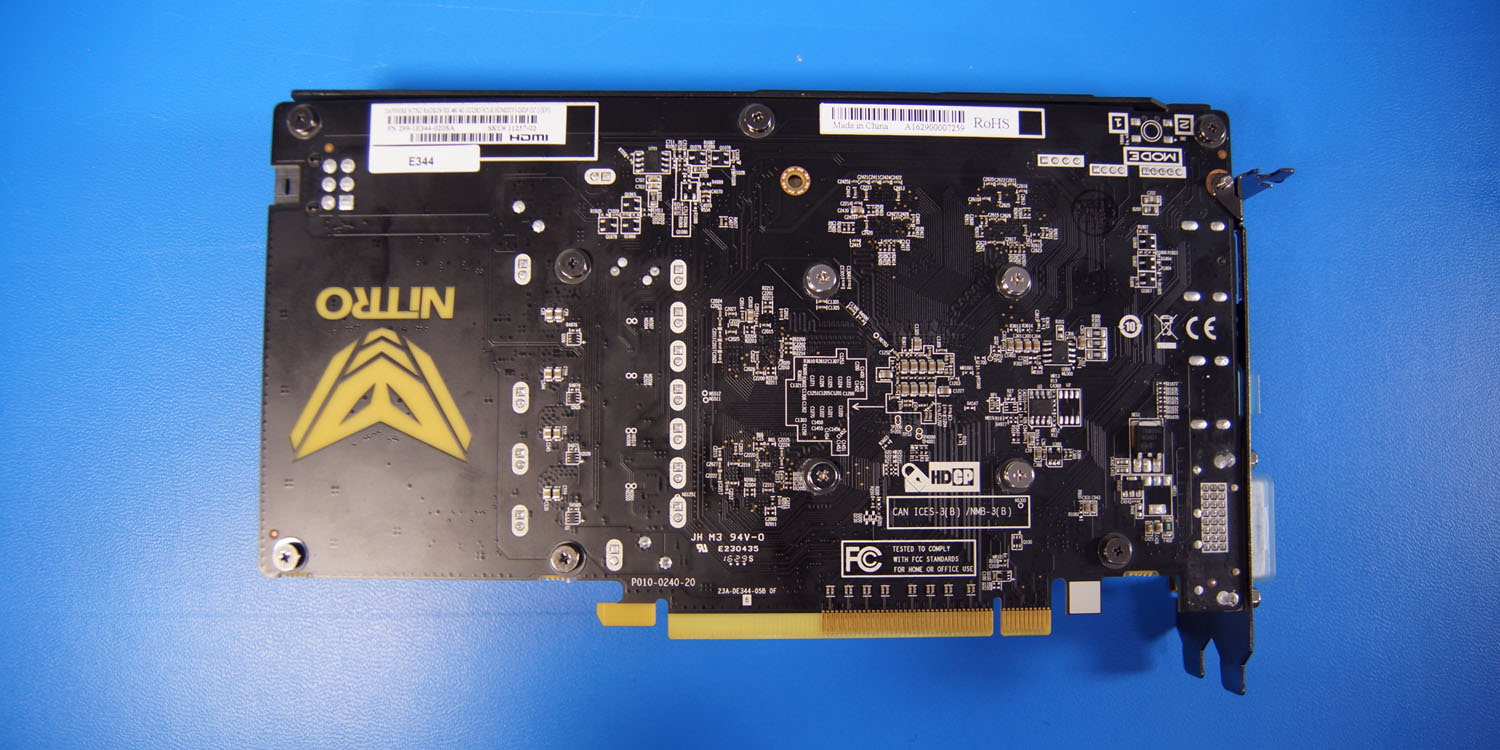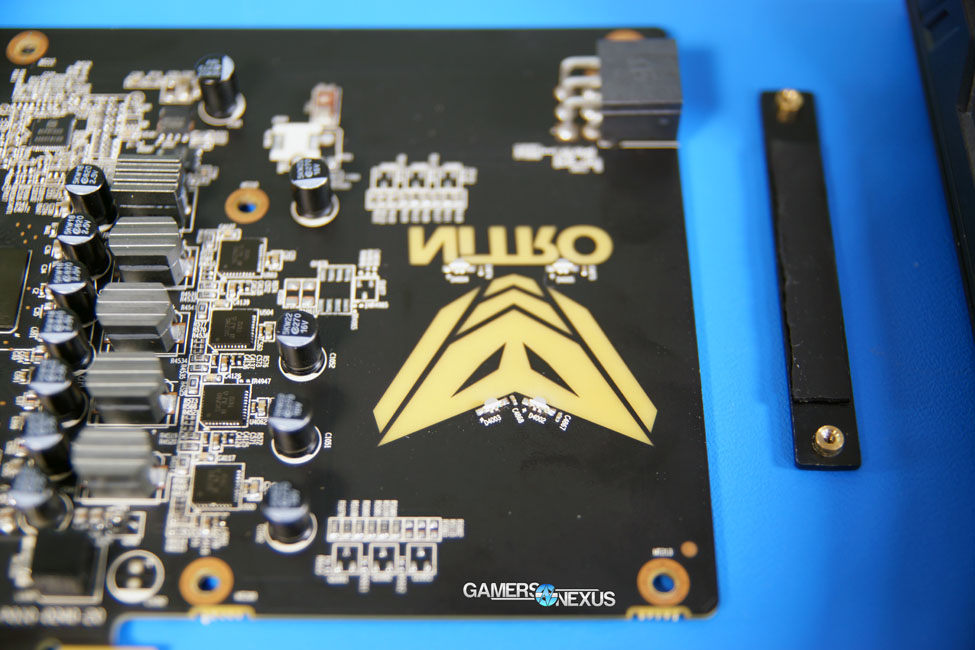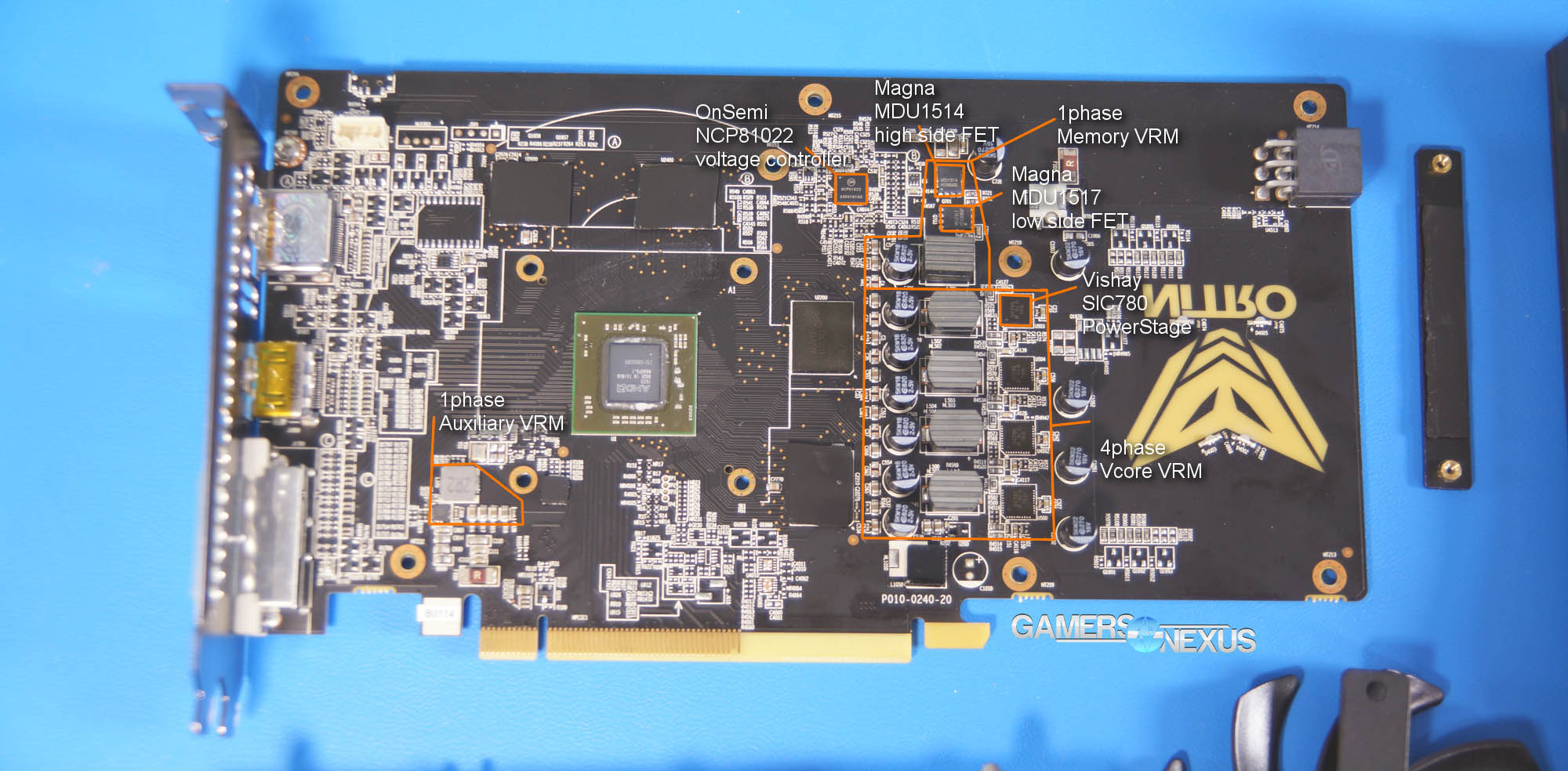Following the Sapphire RX 460 Nitro 4GB graphics card review that we posted, we decided to send the card through a tear-down, as we did with the RX 470, RX 480, GTX 1060, and GTX 1080 (links go to disassembly articles).
The RX 460 Nitro uses a custom PCB and shroud. This is a step away from the reference coolers provided by AMD for the RX 470 and RX 480 cards. The Nitro is easily dismantled, done by removing a handful of rear-side screws to release the shroud & cooler, then four more screws to release the heatsink.
Let's run through some photos and discussion of the PCB. Here's a video of the process, for more perspective:
Sapphire RX 460 Nitro Parts Explosion
Here is the parts explosion of the RX 460 Nitro. It's a simple design, with only these components:
PCB + core components
Shroud + fans
Heatsink
The cooler uses replaceable fans (see above – one removed) for RMA purposes, which is probably the only value-add on this card, given its absurd price ($170)** (UPDATE: The card is now available for $140, which is far more reasonable than the launch-day $170 cards that we saw available. Still, the rest of the alternative suggestions below stand). The fans are attached to a protruding piece of plastic that contains pass-through cables, then contacts on the end. Those contacts feed into the pins, which then hit another pass-through cable, bridge with the second fan, and connect to the PCB. This design allows users to order a replacement fan via warranty or RMA process, should one die, then easily replace it themselves (with two screws changed). No cables are involved, reducing risk of the customer forgetting to connect a fan and removing the need to eject the shroud.
Looking at the PCB later on, we can actually see a blank, second set of solder points for another fan connector – that's unneeded, because Sapphire is bridging both fans within the shroud.
Sapphire is using traditional blade design for its fans, with a glossy coat of black paint. The fans are dual-push and inject air into the aluminum heatsink. The heatsink used has widely spaced aluminum fins, contains two heatpipes, and contacts the GPU and VRAM directly. The VRM MOSFETs are covered with a separated piece of aluminum (shown as a black-painted bar in the photos), which uses a thermal adhesive tape to join to the FETs.
The heatsink's fins terminate in an aluminum slug, which contains an inset copper coldplate (that's actually got a somewhat rough surface, sub-optimally). The copper coldplate is small, reasonably so, as it is only contacting the Polaris 11 GPU directly. That chip is significantly shrunken compared to Polaris 11.
Sapphire is using two 6mm heatpipes for its RX 460, one feeding through the GPU directly and the other routed over the VRM.
The VRM components for Sapphire's RX 460 Nitro consist of about $4 of parts (cost) -- not quite like the $18 VRM used by ASUS, or $45 VRM on some Galax cards.
As for the PCB, here is an excerpt from our review:
“The Sapphire RX 460 Nitro is using a 4-phase power design for its Vcore VRM, with a +1-phase for the memory VRM. The NCP81022 OnSemi voltage controller makes an appearance on the RX 460, accompanied by Magna MDU1514 and 1517 high- and low-side FETs (respectively). We'll discuss this in more depth (and talk about hard mods and volt mods) in our upcoming PCB analysis. Subscribe to the channel for that.”
The above diagram was by Libor Sadilek, whom we've brought on to assist with the RX 460 PCB analysis video that's forthcoming. We'll talk about the impact of these components on overclocking and potential hard/volt mods in that video.
Sapphire is charging $140* (updated: the listings at $170 have now been replaced by Sapphire's $140 listing) for this setup, which seems in-step with their overcharge on the RX 470 Platinum Edition card with a mostly reference RX 480 cooler (though no copper coldplate). There are merits to the RX 460 in the ~$100 price-point – maybe $110, if the builder absolutely cannot stretch to an R9 380X or GTX 950. The card is outperformed by a $150 R9 380X from last-gen and by a GTX 950 (upwards of 20-25%, in some cases).
Regardless, there you have it – that's the tear-down. Pretty simple, this time around. The card was trivial to take apart, so we'll give Sapphire points there. It'd make the warranty process easier with the fan replacements.
Update: The content has been updated to reflect Sapphire's $140 price-point, as the initial $170 listings were outside of Sapphire's control.
Editorial: Steve “Lelldorianx” Burke
Video: Andrew “ColossalCake” Coleman
PCB Diagram: Libor Sadilek
